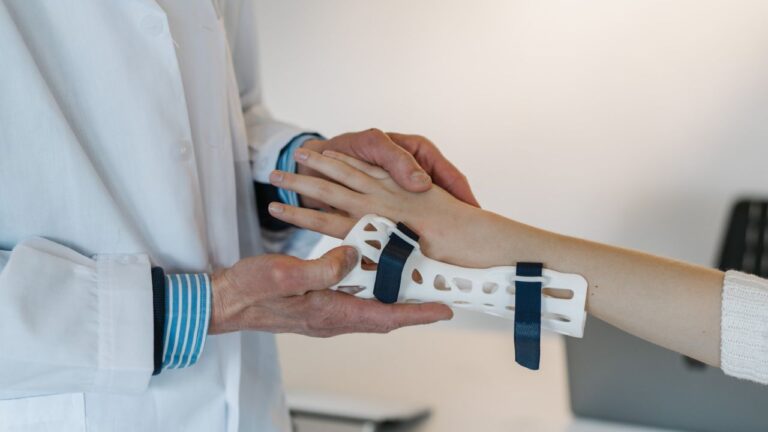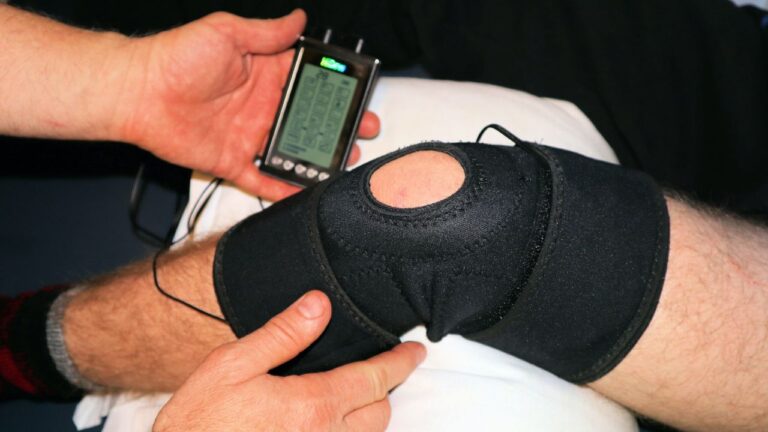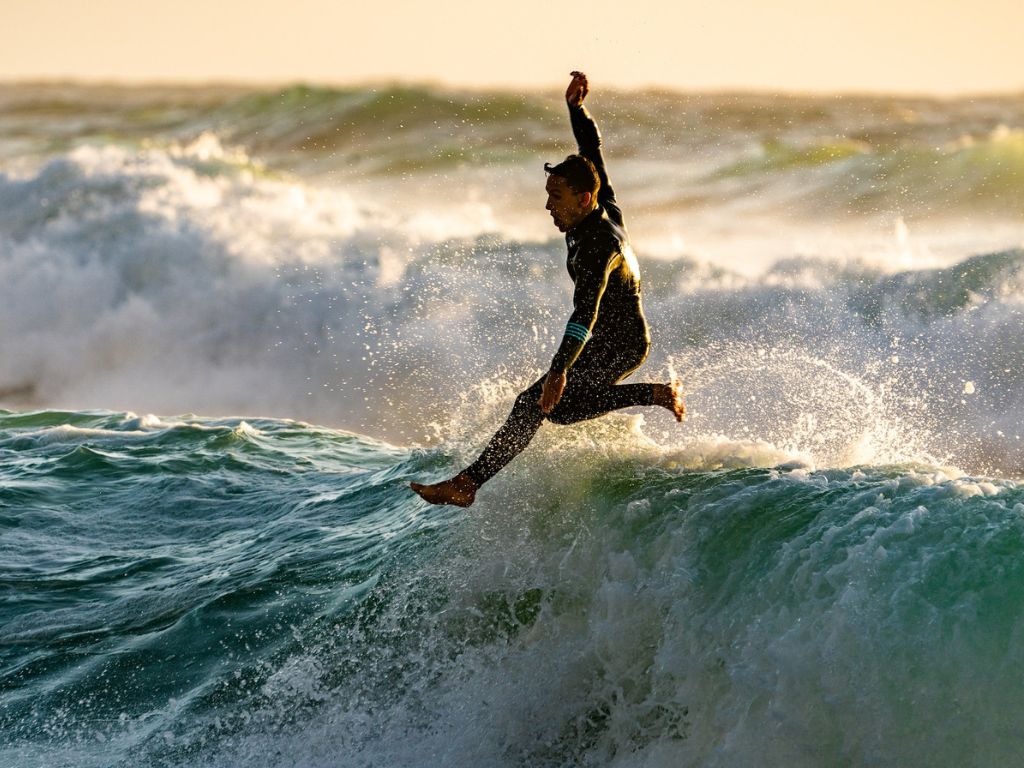Whether I am in Hawaii or California, there’s nothing quite like the rush of gliding across the high wave. Although, as with other extreme sports, certain risks are involved with surfing.
Don’t get me wrong; surfing is considered a safe sport. It just isn’t an injury-free activity. And I’m gonna tell you how to avoid those mishaps and have lots of fun.
But first, let’s take a look at some statistics. According to USLA, surfing accounts for approximately 10% of the total 50,000 annual ocean-related injuries in the US.
Surfing injuries can range from minor scrapes and bruises to major stuff like spinal cord injuries and head trauma.
The most common surfing injuries in the US are head injuries and concussions, followed by limb injuries (wrist, shoulder, and knee). Other common surfing injuries are cuts, scrapes, and bruises from falls or contact with the surfboard or other surfers.
- According to an American Academy of Orthopaedic Surgeons study, the most common surfing injury in the US is lacerations (cuts) followed by contusions (bruises), sprains, and fractures.
- The study found that the average age of the injured surfer was 26 years old, with males making up the majority (76%) of surfing injuries.
- The AAOS study found that the most common cause of a surfing injury was a fall from the board, accounting for 47% of all surfing injuries.
Surfers also risk drowning and exposure to oceanic dangers such as strong currents and harmful marine life. It’s best to check the conditions and know your limits before heading out into the water.
Most Common Surfing Injuries (& More Boring Numbers)
The types of injuries surfers are most likely to experience vary depending on the water conditions and their skill set.
Most surfing injuries can be put into four major categories: wrist injuries (sprains, strains, and fractures), head and neck injuries (concussions and contusions), upper body injuries (dislocations and back problems), and lower body injuries (knee and ankle).
1. Wrist Injuries
Wrist injuries are the most common surfing injuries. Since surfing requires a lot of arm strength and agility, the wrist is often put under a lot of strain.

Sprains and Strains
Strains are injuries to the muscles and tendons, while sprains are injuries to the ligament tissue that connects the bones. According to a study published in the American Journal of Sports Medicine, wrist injuries account for approximately 8-10% of all surfing injuries.
Wrist sprains and strains are caused by improper technique or an attempt to break a fall in surfing. This type of injury usually happens in the dominant hand. Symptoms include pain, swelling, and limited movement.
Fractures
Surfers usually fracture their bones when they fall and land on an outstretched hand. Symptoms of a wrist fracture include severe pain, swelling, and difficulty using the affected hand.
A study by the University of Hawaii found that wrist fractures are the second most common type of surfing injury. It accounts for almost 7% of all injuries among surfers.
2. Head and Neck Injuries
Injuries to the head and neck are the most dangerous among surfers. Thankfully, they aren’t the most common. It’s usually the result of a surfer falling and hitting their head on the board or the water.
Concussions
A concussion is a traumatic brain injury caused by a blow to the head. They can also occur from being hit by another surfer or the board.
Symptoms of a concussion include headache, confusion, and, in severe cases, memory loss. According to a study by the Surfing Medicine Society, over 37% of surfers’ head injuries were mild traumatic brain injuries (MTBIs) or concussions.
Additionally, it’s been observed that almost 50% of concussions go unreported. In short, be extremely careful.
Lacerations and Contusions
These are common among surfers who suffer from cuts and bruises on their heads and neck from various surfing accidents. Symptoms of lacerations and contusions include pain, swelling, and bruising.
A study published in the Journal of Wilderness and Environmental Medicine found that these types of injuries account for approximately 6% of all surfing injuries.
3. Upper Body Injuries
Upper body injuries in surfing are mostly the result of overuse. That’s why paying attention to your body and knowing when to quit is important.
Shoulder Dislocations and Rotator Cuff Injuries
These happen due to the repetitive motions involved in paddling and catching waves. Symptoms of shoulder dislocations and rotator cuff injuries include pain, weakness, and limited movement.
A study The Journal of Sports Medicine published shows that shoulder injuries account for approximately 10-12% of all surfing injuries.
Back Injuries
Incorrect falls, improper technique, and overuse during a surf session can lead to back injuries. A study by the University of Hawaii found that back injuries account for approximately 5% of all surfing injuries among surfers.
Pro Tip: Always take back injuries seriously. It can affect the quality of life even after the injury is healed.
4. Lower Body Injuries
Similar to upper body injuries, these too happen from overuse and repetitive motions like paddling and popping up.

Knee Injuries
A study published in the Journal of Sports Medicine and Physical Fitness found that knee injuries account for approximately 5-7% of all surfing injuries.
Ankle Sprains
Ankle sprains are common among surfers who twist their ankles while getting on and off their board or from a fall while surfing.
According to a study published in the American Journal of Sports Medicine, ankle sprains account for approximately 5-7% of all surfing injuries among surfers.
How to prevent surfing injuries?
Based on my experience, there are four major causes of surfing injuries: improper technique, lack of warm-up and cool-down, lack of proper equipment, and surfing in less-than-safe conditions.
A. Learn, practice and use proper technique.
One of the leading causes of surfing injuries is improper technique. It often results in elbow injuries (like tennis elbow) among surfers who try paddling and popping up without knowing the correct posture.
Sticking to the right posture, timing your movements correctly, and always being in the right position when catching a wave are important.
Improper technique can cause strain and injury to your back, neck, arms, and legs. Get proper instruction and continue practicing your techniques until everything drills into your muscle memory.
Any qualified instructor can help you learn the proper techniques and avoid common mistakes that can lead to injury.
B. Don’t forget to warm up and cool down.
Another common cause of surfing injuries is not warming up and stretching properly before hitting the water. And not cooling down after the session.
It’s a basic step before any physical activity, yet overconfident beginners easily overlook it. A good stretching routine will help prevent injuries and improve your performance.
Tip: If stretching sounds too boring or lame, start with a light jog or jump rope to get your heart rate up. You can follow that by stretching major muscle groups (back, arms, shoulders, legs, chest).
C. Always use the right equipment.
Having the right equipment is important for any sport, and surfing is no exception.
Even using the wrong type of surfboard can cause many problems since it’ll take a lot of work to balance and control your movements. Similarly, not wearing a proper wetsuit can lead to hypothermia.
Ensure that you invest in quality equipment appropriate for your skill level and the conditions you will be surfing in. In short, only some things have to be top-quality right off the bat. As a beginner, you just need to get the right equipment rather than the best one.

D. Never surf in dangerous conditions above your skillset.
Finally, surfing in hazardous conditions can also lead to injury. It includes surfing in large waves, crowded areas, or areas with rocks or other debris.
Always be aware of your surroundings and wear appropriate safety gear. If you need clarification on the conditions, consider consulting a local surf shop or asking other surfers.
How to treat surfing injuries?
Treating surfing-related injuries can vary greatly depending on the severity of the injury and the type of injury.
Get first aid and seek medical attention immediately if you’re injured while surfing. Even if it doesn’t look BIG, take precautions and get yourself checked. Early treatment can help minimize the risk of long-term complications and speed up recovery.
In case of lacerations, you’ll get away with a few stitches. But sprains and strains are different. A major sprain / strain in the joints will require physical therapy or surgery. Your doctor may prescribe pain medication or recommend wearing a brace to support the affected joint.
The trick to a successful recovery after a surfing injury is not to take physical therapy lightly. It’s super important to undergo rehabilitation and physical therapy. This will improve the range of motion, reduce pain, and prevent long-term complications.
Physical therapy can also help to restore strength and flexibility and to prevent future injuries. Your physical therapist will work with you to develop a rehabilitation plan tailored to your individual needs and goals.
How to apply first-aid for surfing injuries?
Wipeout or Drowning: In these situations, check their airways, breathing, and pulse immediately. If they are unconscious and not breathing, start performing CPR. If they are conscious, ensure they’re breathing and call emergency services.
Sprains or Strains: It’s important to immobilize the joint and elevate it above the level of the heart in these situations. Apply a cold compress to the affected area for 15 to 20 minutes.
Lacerations: Rinse the wound with salt water and apply a clean bandage if it’s not too deep. Otherwise, rinse with clean water and apply direct pressure to stop the bleeding.
Sunburn: Rinse the sunburned area with cool water and apply aloe vera or a moisturizing lotion. Avoid exposing the sunburned skin to sunlight and wear protective clothing.
Expert QnA
Q. How common are surfing injuries?
Surfing injuries are rare. According to the US Lifesaving Association, there are approximately 50,000 annual ocean-related injuries in the US. Approximately 10% of those are surfing injuries. That’s 5000 injuries for over 3 million surfers.
Q. What are common beginner surfing injuries?
The most common surfing injuries among beginners are shoulder injuries (rotator cuff strains or tears), wrist and hand injuries (sprains or fractures), and head and neck injuries. According to a study from the Journal of Surfing Medicine, beginners account for 45% of all surfing injuries.
Q. What can I do to prevent surfing injuries?
To prevent surfing injuries, always check the conditions, know your limits, and use proper technique. It’s also important to warm up before surfing and to take breaks when you feel tired.
Q. What causes wrist injuries in surfing?
Surfing wrist injuries are often caused by improper technique, overuse, or attempting to break a fall. Sprains, strains, and even fractures are common among wrist injuries due to surfing.
Q. What causes head and neck injuries in surfing?
Head and neck injuries in surfing are caused by falling and hitting the head on the board / water. Concussions and lacerations or contusions are the most common head and neck injuries.
Q. What are the symptoms of a shoulder dislocation or rotator cuff injury in surfing?
Symptoms of shoulder dislocations or rotator cuff injuries in surfing include pain, weakness, and limited movement. If your notice any of these symptoms, consult a doctor immediately.




